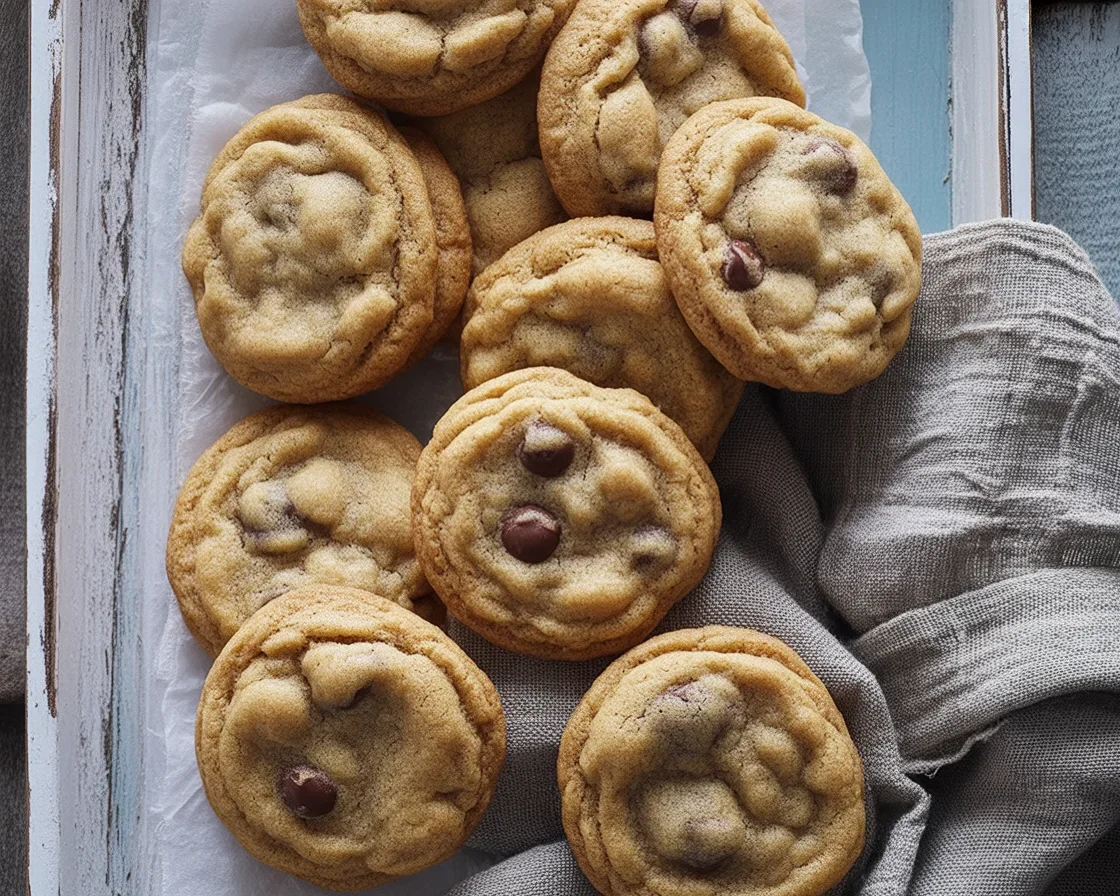Okay, so there’s this thing about sweet and salty that just… works? Like, I don’t know who figured it out first but whoever decided to sprinkle salt on chocolate deserves some kind of medal. Himalayan pink salt cookies have basically taken over Instagram and every fancy bakery in town, and honestly—I get it now. After burning through probably way too much gluten-free flour and sugar testing these, I’m completely sold on the hype.
These aren’t just your grandma’s chocolate chip cookies with some fancy salt thrown on top (though no shade to grandma’s cookies, obviously). There’s something almost magical about those pink crystals catching the light, and then—boom—you bite into this perfect combination where the buttery sweetness gets interrupted by these little explosions of salt that somehow make everything taste… more? Is that even a word for it? More intense, more interesting, just more.
And if you’re already obsessed with the pink salt trend (or about to be), you’ll want to explore how this mineral magic works in other baked goods too—from pink salt gluten-free crackers to pink salt gluten-free bread and even pink salt sourdough. But we’ll get to all that. First, cookies.
If you’ve been scrolling past those drool-worthy cookie posts wondering if gluten-free versions can actually match the real deal—or if you’re just here because you bought pink salt at Trader Joe’s and have celiac disease or gluten sensitivity—you’re exactly where you need to be. I’m gonna walk you through literally everything about making these gluten-free cookies at home. The science-y stuff (but like, explained so it makes sense), the actual techniques that won’t fail you, and honestly all the mistakes I made so you don’t have to.
Fair warning: once you nail these, regular gluten-free cookies might feel a little… flat? Sorry not sorry.
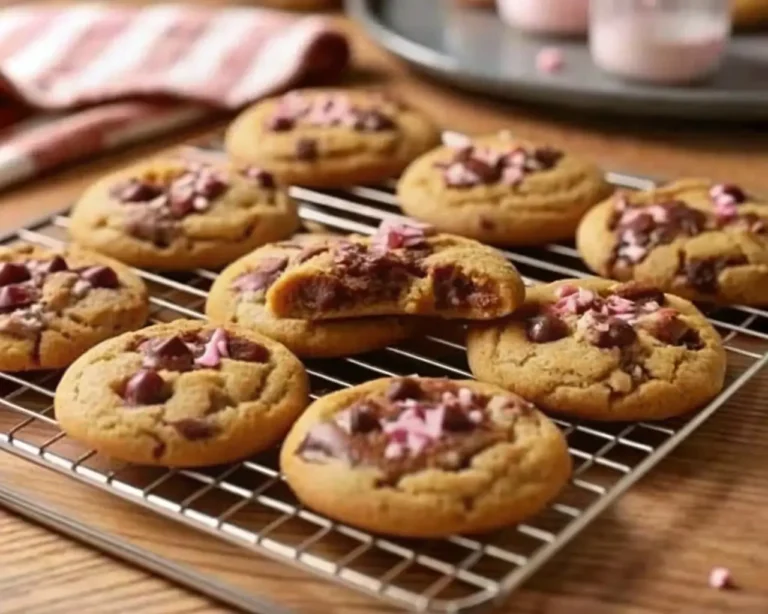
Himalayan Pink Salt Cookies GF
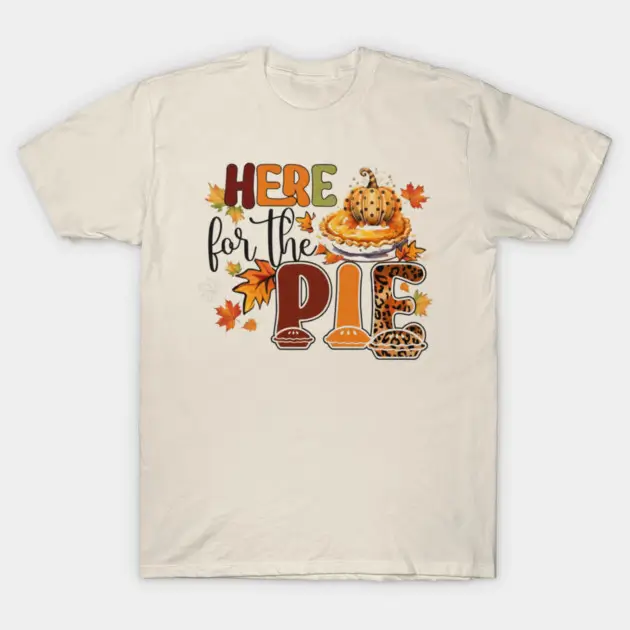
Delicious gluten-free cookies featuring Himalayan pink salt for a perfect sweet and salty combination.
- Total Time: 1 hour 27 minutes
- Yield: 12 servings
Ingredients
- 1 cup gluten-free flour blend
- 1/2 cup unsalted butter, softened
- 1/2 cup brown sugar
- 1/4 cup granulated sugar
- 1 large egg
- 1 teaspoon vanilla extract
- 1/2 teaspoon baking soda
- 1/4 teaspoon salt
- 1/2 cup chocolate chips
- Coarse Himalayan pink salt, for sprinkling
Instructions
- Preheat your oven to 350°F (175°C).
- In a bowl, cream together the butter, brown sugar, and granulated sugar until smooth.
- Beat in the egg and vanilla extract until well combined.
- In another bowl, whisk together the gluten-free flour, baking soda, and salt.
- Gradually add the dry ingredients to the wet ingredients, mixing until just combined.
- Fold in the chocolate chips.
- Chill the dough for at least 1 hour.
- Drop rounded tablespoons of dough onto a baking sheet lined with parchment paper, leaving space for spreading.
- Sprinkle each cookie with a few coarse Himalayan pink salt crystals.
- Bake for 10-12 minutes, or until the edges are golden but the centers are still soft.
- Let the cookies cool on the baking sheet for 10 minutes, then transfer to a wire rack to cool completely.
Notes
For the best texture, do not skip the chilling step. Cookie dough can be frozen for later baking.
- Prep Time: 15 minutes
- Cook Time: 12 minutes
- Category: Dessert
- Method: Baking
- Cuisine: American
- Diet: Gluten Free
Why Himalayan Pink Salt Makes Better Gluten-Free Cookies (No, Really)
Before we start creaming butter and pretending we know what we’re doing—let’s talk about why this specific salt matters, especially for gluten-free baking. Because I know what you’re thinking: “Salt is salt, right?”
Wrong. So wrong.
Himalayan pink salt comes from these ancient mines in Pakistan—like, we’re talking 250 million years old ancient. The Khewra Salt Mine specifically, tucked away in the Salt Range mountains where it’s just been sitting there since before dinosaurs were even a thing (okay, not that long, but you get the point). This salt formed when ancient oceans evaporated and got buried deep underground, completely untouched by pollution or whatever other stuff contaminates modern salt deposits.
The pink color? That’s from iron oxide and trace minerals. Not food coloring—actual minerals that give each crystal this gorgeous rosy tint that ranges from barely-there-pink to almost salmon-colored, depending on where in the mine it came from.
Here’s where it gets interesting though. Regular table salt is basically stripped naked—they process it so much that all those trace minerals get removed, then they add iodine back in and call it a day. Himalayan pink salt contains up to 98 percent sodium chloride, with the rest consisting of trace minerals like potassium, magnesium, and calcium. Now, before anyone gets carried away—the amounts are pretty small. You’re not gonna cure any deficiencies eating cookies (I wish), but these minerals do contribute to a more complex flavor that’s less… aggressive? Less in-your-face salty.
But honestly, the real game-changer for gluten-free baking is the texture. Those crystals are naturally coarser, more irregular than your standard Morton’s. When you sprinkle them on gluten-free cookie dough before baking, they create this visual appeal that screams “I know what I’m doing in the kitchen” (even if you burned toast this morning—no judgment). Plus those crystals deliver these amazing little bursts of saltiness that enhance rather than drown out the sweetness—something that’s especially important in gluten-free baking where flavors can sometimes fall flat.
The flavor profile itself is cleaner. I did a side-by-side comparison once—same gluten-free cookie recipe, different salts—and the Himalayan version just tasted… smoother? Less of that sharp, almost chemical-y aftertaste that iodized salt sometimes leaves behind. This is crucial for gluten-free baking since you’re already working without gluten’s flavor contribution. It’s why those bougie gluten-free bakeries charge $6 per cookie and use pink salt like it’s going out of style. They’re onto something.
If you want to understand the full science behind pink salt in gluten-free baking—including mineral composition, grain size differences, and how it performs in different recipes—I’ve put together a comprehensive Himalayan pink salt recipes guide that dives deep into everything from crackers to bread to that viral weight loss drink everyone’s asking about.
(Also, can we talk about how pretty they look? Like, these cookies are basically Instagram gold without even trying.)
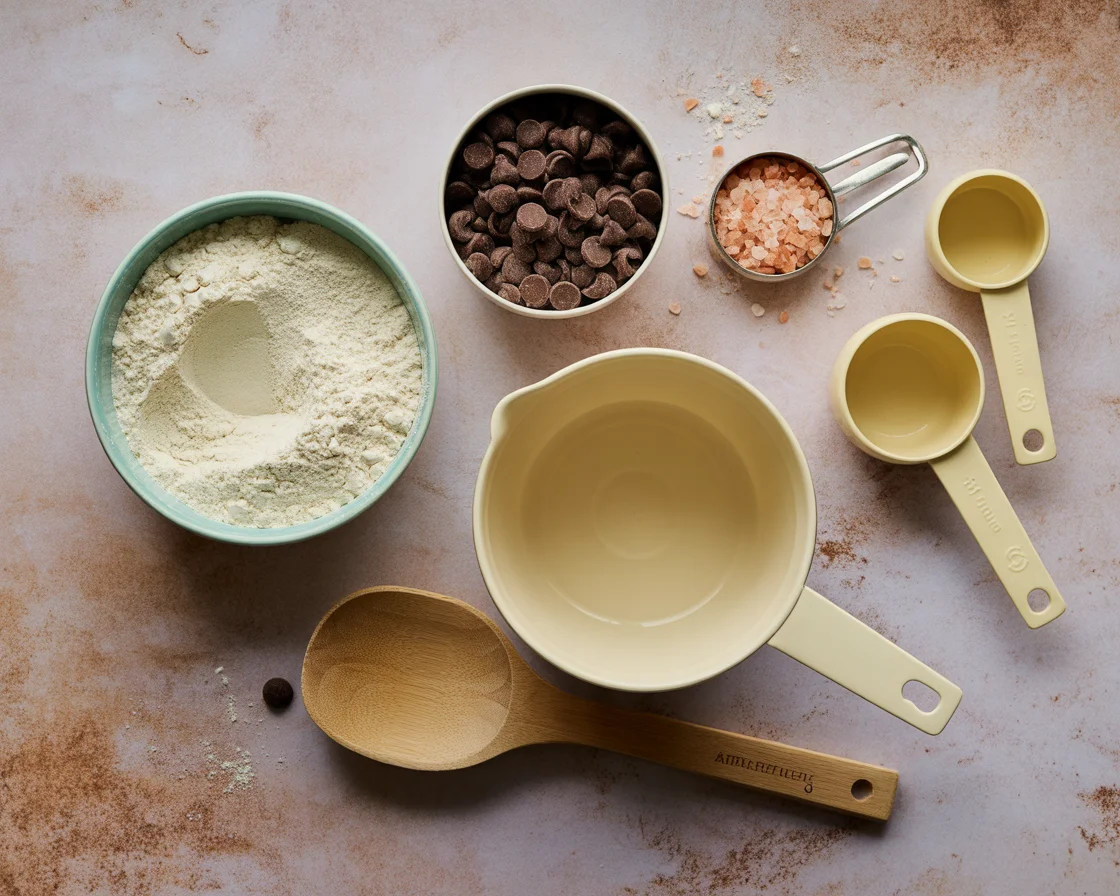
The Science Behind Sweet and Salty Gluten-Free Cookies
So here’s a fun fact that blew my mind when I learned it: salt doesn’t just make things taste salty. I know—groundbreaking, right? But seriously, it’s a flavor enhancer that actually amplifies and balances other flavors in ways that seem almost unfair—and this is ESPECIALLY important in gluten-free baking.
When salt hits your tongue, it suppresses bitter notes while making sweet flavors pop harder. This is called taste contrast, and it’s basically why a pinch of salt makes caramel taste MORE caramelly (is that grammatically correct? Whatever). And chocolate? Don’t even get me started. Chocolate with salt is like… imagine turning up the volume on a song you already love. Same song, just better.
In gluten-free cookies specifically—and I tested this way more than necessary because I’m apparently incapable of leaving well enough alone—salt does multiple jobs. Inside the dough, it enhances flavor depth (which gluten-free baked goods sometimes lack), balances sweetness, and helps mask any potential “beany” or “gritty” aftertaste that some gluten-free flour blends can have. You know that feeling when something’s so sweet it almost hurts, or when gluten-free baked goods taste a bit… off? Salt fixes both.
On top of the cookies, those coarse crystals provide textural contrast—that satisfying crunch against the soft, chewy cookie interior. This textural element is HUGE for gluten-free cookies because they can sometimes end up with a one-dimensional texture. It’s like… think of it as the difference between watching a movie in regular definition versus 4K. Same movie, but one has more dimension to it.
There’s also this whole psychological thing happening. Our brains are literally wired to find the sweet-salty combo intriguing. The alternating sensations keep your taste buds engaged instead of becoming desensitized to pure sweetness. It’s why salted desserts feel more sophisticated—they’re not one-note. They’re having a whole conversation on your tongue. For gluten-free baking, this complexity helps people forget they’re even eating gluten-free.
The trick though? Balance. Too little salt and you’re basically making bland gluten-free cookies (which, no). Too much and you’ve made a science experiment that nobody wants to finish. The techniques I’m sharing have been calibrated through… let’s just say more trial and error than I’d like to admit. Multiple friends taste-testing, some brutally honest feedback (“These taste like the ocean and sand” was memorable), and eventually landing on that perfect sweet spot where nobody can tell they’re gluten-free.
“I’ve made these cookies three times for my friends and not a single crumb is left behind. The pink salt makes all the difference!” – Joanne S.
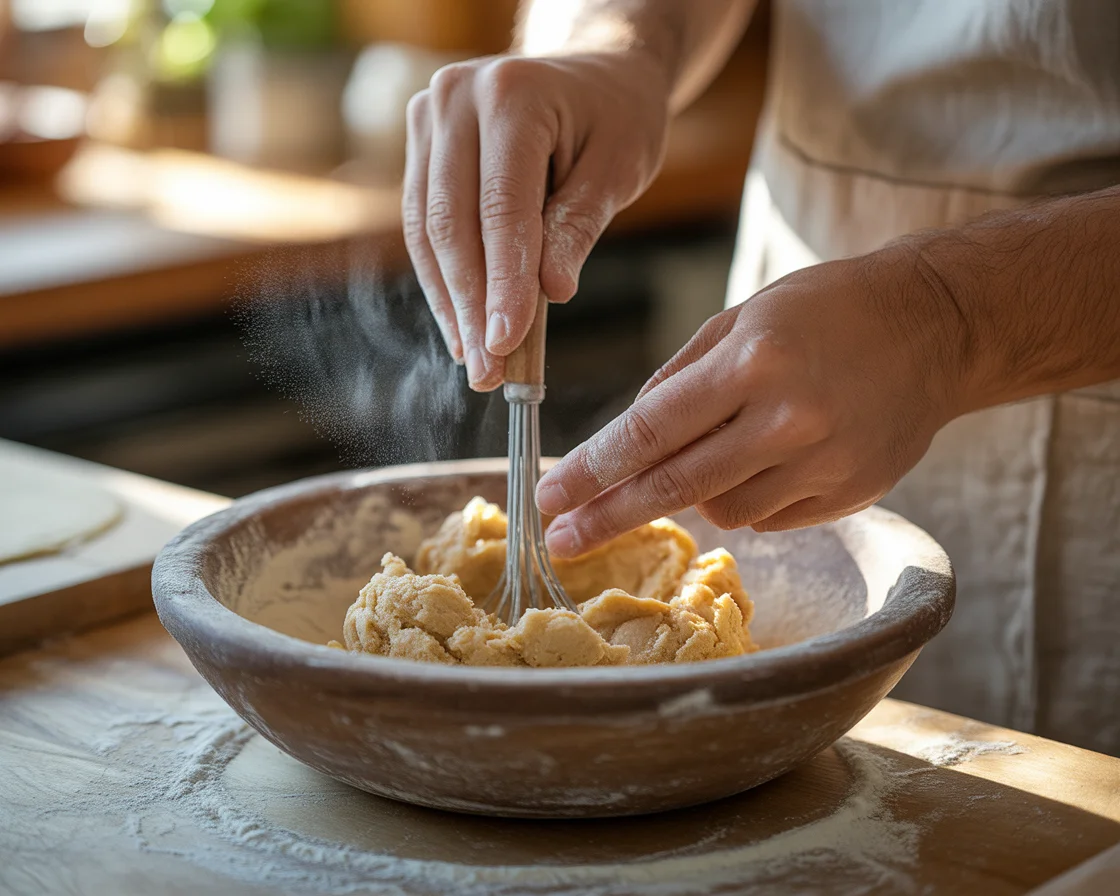
Gluten-Free Flour Considerations for Perfect Pink Salt Cookies
Let’s talk about the elephant in the room—gluten-free flour blends. This is where most people mess up their gluten-free cookies, so pay attention.
The Best Gluten-Free Flour Blends:
Not all gluten-free flour blends are created equal. Some are straight-up disasters for cookies. If you want to dive deep into understanding gluten-free flour blends, I’ve got a whole guide on that. But here’s the quick version for cookies:
1:1 Gluten-Free Baking Blends (The Easy Route): These are specifically formulated to replace all-purpose flour in equal amounts. Look for brands like Bob’s Red Mill 1-to-1, King Arthur Measure for Measure, or Cup4Cup. They already contain xanthan gum or other binders, so you don’t need to add extra. This is what I recommend for beginners because it takes the guesswork out.
Custom Blends (The Control Freak Route): If you want to make your own blend, here’s my go-to ratio:
- 40% rice flour (white or brown)
- 30% tapioca starch or arrowroot
- 20% potato starch (NOT potato flour—different thing!)
- 10% almond flour or oat flour for richness
If you’re using a custom blend, add ¾ teaspoon xanthan gum per cup of flour blend. Xanthan gum acts as a binding agent in the absence of gluten, helping ingredients hold together and providing structure. This helps bind everything and gives you that chewy texture. Want to understand more about how xanthan gum works its magic? Check out my comprehensive guide on xanthan gum in gluten-free bread—the science applies to cookies too.
What to AVOID: Single-flour substitutes like almond flour alone, coconut flour alone, or straight rice flour. These don’t have the structure needed and you’ll end up with weird, crumbly disasters. Also avoid blends that contain bean flours if you’re sensitive to that beany aftertaste.
The Grit Factor: Some gluten-free flours can be gritty. To minimize this, look for finely ground flours, or even better—sift your flour blend before using it. Yes, it’s an extra step. Yes, it makes a difference.
Texture Expectations: Let’s be real—gluten-free cookies will never be EXACTLY like wheat-based cookies because gluten literally provides elasticity and structure. But properly made gluten-free cookies can be just as delicious, just as chewy, and honestly sometimes even better because they’re often more tender and delicate.
Pro Tips for Perfect Gluten-Free Pink Salt Cookies (Learned Through Many, Many Mistakes)
After baking approximately one million gluten-free batches—okay, maybe not a million, but enough that my jeans don’t fit anymore—here’s what I’ve learned the hard way:
Timing Your Salt Application: Don’t sprinkle that salt until RIGHT before the cookies go in the oven. Not before chilling, not 20 minutes before baking—right before. I learned this when I salted a whole batch before the 2-hour chill and came back to find the salt had partially dissolved into the dough. The pretty crystals were gone. The magic was gone. My will to live was… okay, dramatic, but I was definitely disappointed.
Less is Actually More (Who Knew?): Start with less salt than you think you need. You can always add more next time, but oversalted gluten-free cookies are basically a tragedy you can’t fix. I go for 3-5 coarse crystals per cookie. Count them if you have to. Your first batch should err on the conservative side—trust me on this. My sister still brings up the “ocean cookies” incident from 2023 and I’d rather not discuss it.
Where You Put the Salt Matters: Don’t put all your salt crystals right in the dead center of the cookie. Spread them around a bit, maybe cluster them slightly off-center. It looks more natural and means every bite has a chance of hitting that sweet-salty combination instead of one intensely salty center bite that makes you reach for water.
Space Them Out (Gluten-Free Spread Differently): 3 inches between dough balls minimum. Gluten-free cookies can spread unpredictably—sometimes more, sometimes less, depending on your flour blend. Crowded cookies will merge into some weird cookie blob situation and then you have to decide whether to break them apart or pretend you meant to make cookie bark. Save yourself the existential crisis.
Chill Time is NON-NEGOTIABLE for Gluten-Free: This is even MORE important than with regular cookies. Gluten-free dough needs that chill time for the starches to absorb moisture properly. Skip it and you’ll get weird spreading, crumbly texture, or cookies that fall apart. Minimum 1 hour for gluten-free (yes, longer than regular cookies), but overnight is even better. This is similar to the hydration principle used in gluten-free dinner rolls, where proper resting time makes all the difference.
Underbake is the Way: The single best piece of advice I can give you—pull those cookies when they look slightly underdone in the middle. When the edges are golden but the centers are still pale and puffy? That’s your moment. Gluten-free cookies continue firming up as they cool more than regular cookies. Wait until they look fully baked and you’ve got hockey pucks.
The Double Pan Trick: If you struggle with burnt cookie bottoms (raises hand), try stacking two baking sheets together. The extra layer of air insulates against direct bottom heat. This is especially important for gluten-free cookies which can burn more easily.
Grain Size is Real: Use coarse pink salt for topping where you want those visible, crunchy crystals. Use fine pink salt for mixing into the dough where you want even distribution and no weird grainy texture surprises (gluten-free flours can already be gritty, don’t add to the problem).
Let Them Cool COMPLETELY: Gluten-free cookies are fragile when warm. I know they smell incredible and you want to eat one immediately, but they need to cool on the pan for at least 10 minutes (longer than regular cookies), then on a wire rack until completely cool. They firm up significantly as they cool.
Storage Hack for Soft Cookies: Store your baked cookies in an airtight container with a piece of bread. The bread slowly goes stale while keeping your cookies soft through some kind of moisture-sharing magic. For gluten-free cookies, this is crucial because they can dry out faster than wheat-based cookies.
Flavor Variations and Creative Twists
Here’s where you can get a little — let’s say, wild. The himalayan pink salt cookies base is like a blank canvas. Maybe add chopped pistachios or swap chocolate for dried cherries, which are my new obsession. I once threw in a handful of shredded coconut and even drizzled with dark chocolate. Had a few doubters at first but they all converted after bite number two. I’ve even seen folks roll the dough in crushed pretzels (sweet and salty high five). Plus, if you’re gluten-sensitive, you can still join the party by swapping in your favorite gluten-free flour. The salt keeps everything interesting, whatever jazzy twist you try. Just trust your gut — and maybe your snack cravings.
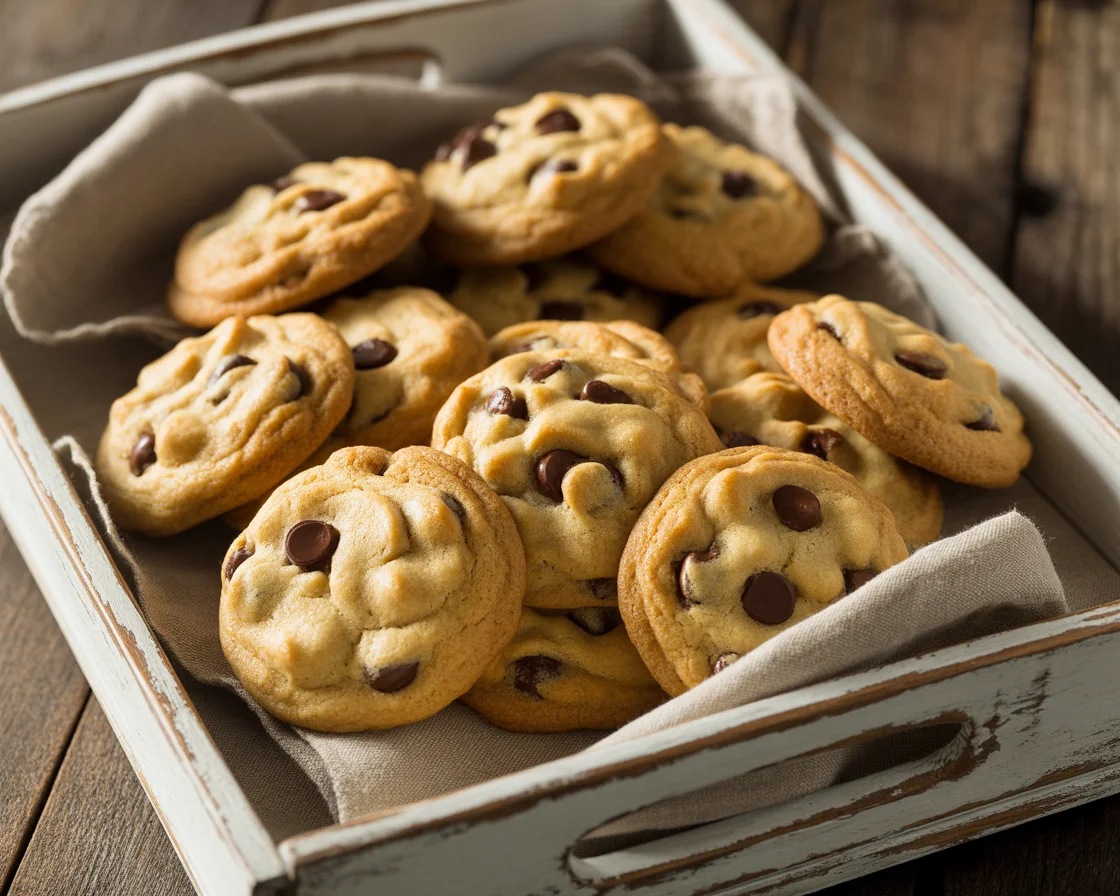
When Things Go Wrong (A Gluten-Free Troubleshooting Guide)
Look—gluten-free baking is chemistry with extra challenges. Here’s how to fix the most common disasters:
Your Cookies Are Spreading Into Thin Pancakes
This is the #1 gluten-free cookie complaint. Usually it’s: butter was too warm, you didn’t chill long enough (gluten-free needs LONGER chilling—minimum 1 hour), your flour blend doesn’t have enough binders (add ¼ tsp xanthan gum per cup if missing), or your oven is running cool.
Solution: Properly softened butter, chill dough minimum 1 hour (longer for gluten-free!), check that your blend has xanthan gum or guar gum, and verify oven temperature. Sometimes adding 2 tablespoons more flour blend helps too.
Your Cookies Are Crumbly and Fall Apart
Welcome to gluten-free baking’s biggest challenge. This happens when there’s not enough binder (xanthan gum), not enough moisture (eggs/butter), or you overbaked them. If you’re struggling with structure issues across your gluten-free baking, check out my gluten-free bread troubleshooting guide—many of the same principles apply to cookies.
Fix it: Make sure your flour blend includes xanthan gum (¾ tsp per cup if making your own blend). Try adding an extra egg yolk for binding and richness. Don’t overbake—pull them when they look underdone. Let them cool COMPLETELY before handling—they firm up significantly.
Salt Keeps Falling Off
Press those salt crystals into the raw dough more firmly than you would with regular cookies. Gluten-free dough can be stickier, which actually helps the salt adhere if you press gently.
They Taste Gritty or “Off”
Your flour blend might be the culprit. Try a different brand—some are grittier than others. Sift your flour blend before using. If there’s a beany aftertaste, your blend might contain chickpea or fava bean flour—try a rice-based blend instead. The pink salt helps mask these flavors, but can’t fix everything.
They’re Too Dry and Dense
Gluten-free baked goods need more moisture than regular ones. Add an extra tablespoon of butter, or try adding 1-2 tablespoons of milk. Don’t overbake—pull them early. Consider adding a tablespoon of honey or corn syrup for moisture retention.
Uneven Browning
Rotate pans halfway through baking. Gluten-free cookies can brown faster on the bottoms—try that double pan trick. Make sure cookies are uniform size so they bake evenly.
They Spread at First Then Puff Up Weird
Your leavening might be old, or you’re using too much. Gluten-free cookies often need LESS baking soda/powder than regular cookies because there’s no gluten structure to support rise. Try reducing leavening by ¼ teaspoon.
Health Stuff (Let’s Be Real for a Second)
Okay, let’s have an honest conversation here—these are cookies. Delicious, incredible, life-changing gluten-free cookies, but still cookies. Not health food, not a superfood despite what the pink salt marketing might want you to believe.
Yes, being gluten-free makes them suitable for people with celiac disease or gluten sensitivity—that’s a genuine health benefit for those populations. Following a gluten-free diet is essential for anyone diagnosed with celiac disease. But “gluten-free” doesn’t automatically mean “healthy.”
Yes, Himalayan pink salt contains trace minerals like calcium, potassium, magnesium, and iron. That’s true. Also true: the amounts per serving are so negligible they’re basically meaningless nutritionally. You’d need to eat an absurd number of cookies to get meaningful benefits, and at that point… well, the sugar and butter are probably more of a concern than the minerals are a benefit, you know?
The sodium content is virtually identical to regular table salt—both are about 98% sodium chloride. The “healthier salt” marketing is mostly about the trace minerals and lack of additives, not lower sodium. Each cookie has roughly 100-150mg of sodium depending on how heavy-handed you are with the topping salt.
Here’s what you’re actually eating per cookie (approximate):
- Calories: 180-220 (gluten-free flour blends can vary in calories)
- Total Fat: 9-11g (thanks, butter!)
- Saturated Fat: 5-6g
- Carbs: 25-28g
- Sugar: 15g (it’s a cookie, guys)
- Protein: 2-3g (varies by flour blend)
- Sodium: 100-150mg
- Fiber: 0-1g (some gluten-free blends have more fiber)
Some gluten-free flour blends are actually higher in calories and carbs than regular flour. Don’t fool yourself into thinking these are diet food.
My philosophy with treats like this: eat them mindfully, enjoy the hell out of them, and don’t stress too much about the nutritional breakdown. These cookies bring joy AND are safe for people who need to avoid gluten—that’s its own kind of nourishment, you know? Just maybe don’t eat them for every meal. Or do—I’m not your mom.
Storage and Shelf Life
Let’s be honest here — these himalayan pink salt cookies rarely last more than a day in my house. But, you know, sometimes you manage self control. If you do, glass jars keep them crisp. Pantry plastic containers work too, but avoid humid spots. They’ll stay fresh for about 3-4 days. You can also freeze the dough in scoops for midnight cravings (bake straight from the freezer, just add a minute or two). Pro tip: put a slice of bread in with your cookies to stop them drying out. Must’ve learned that one from my grandma, no joke.
Serving Suggestions and Pairings
Just for kicks, wanna know how I serve my himalayan pink salt cookies?
- With ice cold milk…classic but unbeatable.
- Next to espresso, especially after a big meal.
- Crumbled over vanilla ice cream (honestly, try this, it’s magic).
- Stuffed in a lunchbox for a surprise snack, or just eaten warm, straight off the tray because patience is overrated.
You can even fancy things up for dessert night, maybe drizzle with caramel or throw in a side of fresh berries. Totally up to you.
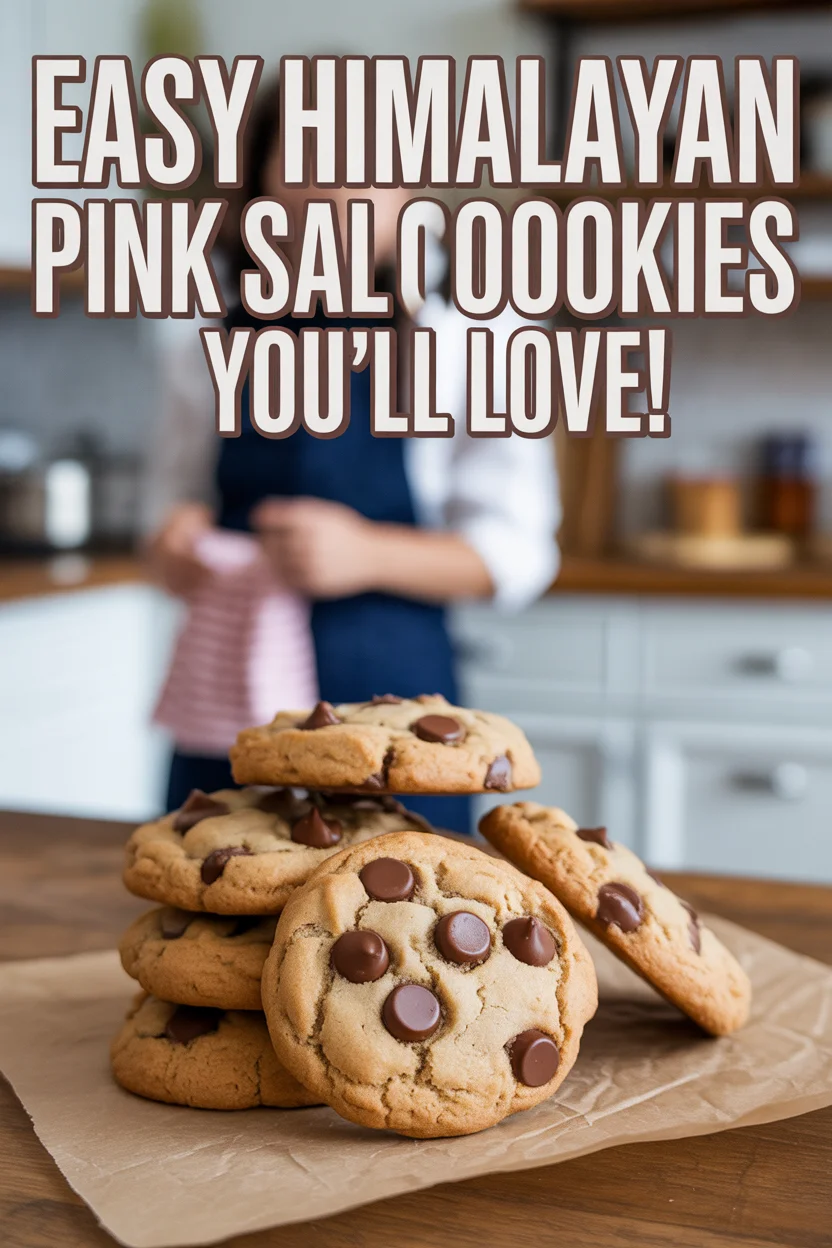
Go Make These – You’ll Thank Yourself Later
So that’s pretty much my take on nailing the best himalayan pink salt cookies at home. The combo of buttery sweetness and that subtle pink salt zing gets me every time. It’s fun and just a little bit different. And showstopping. If you dig experimenting, swap things up or try a related salted chocolate shortbread cookies recipe for another spin. Don’t forget to check out the tips from The Creek Line House and play around. Give these a try, snap a picture (trust me, your friends will ask for the recipe), and let me know how you like ‘em. Go bake something awesome!

